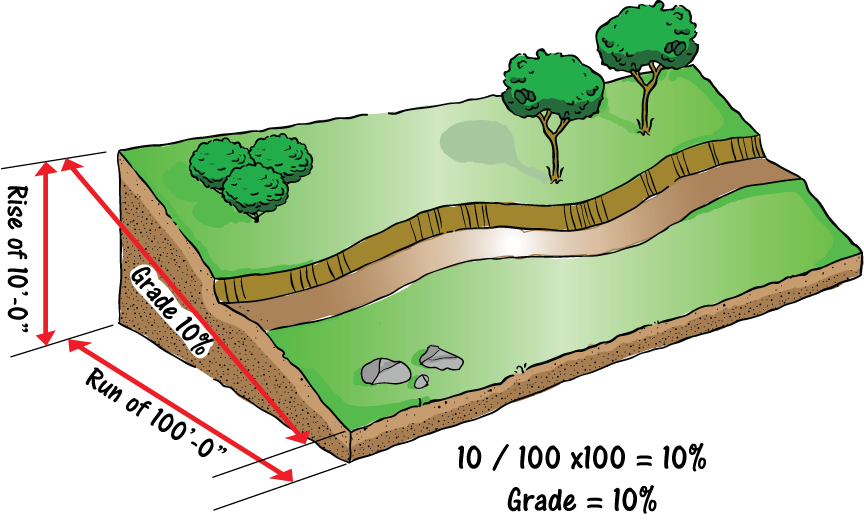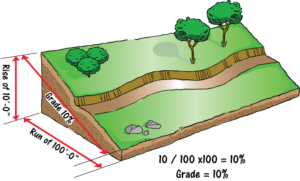
Know how to figure the percent slope of your trails?

Photo courtesy of Great Trails
Percent slope is determined with just two numbers. It is calculated using the amount of vertical distance (rise) over a given horizontal distance (run). Often called “rise over run,” the “rise” is divided by the “run.” For example, if the vertical rise is 10 feet over a distance of 100 feet, the math reads like this: 10 feet rise is divided by 100 feet run, then multiplied by 100 to create a percentage, which equals a 10% slope.
Two-part quiz:
- What is the percent of the slope for an area that has 3 feet of rise over 100 feet of run?
- And, if a trail is built, what is the percentage of cross slope necessary to adequately shed water trailside?
To calculate the slope for 3 feet of rise over 100 feet of run is: 3 divided by 100 equals 0.03, and multiplied by 100 to get the percentage, which is 3%.
To calculate cross slope is easy. The Rule of 1/3 states that the grade slope should be 1/3 of the cross slope. Or, stated another way, cross slope should be three times larger than grade slope. If the grade slope is 3%, then cross slope must be 3 times larger or 9%.
The answers are 3% grade slope and 9% cross slope.
Find The Slope Of Your Trail
It’s easy to collect this information in the field. Pound two stakes along the slope of interest. Tie a rope at the base of the uphill stake. Next, tie the other end of the rope to the downhill stake at the point where the rope is level. On the downhill stake, measure from the ground to the height of the rope to determine the rise. Measure the length of rope between the two stakes for the run. Do the math as stated above.
